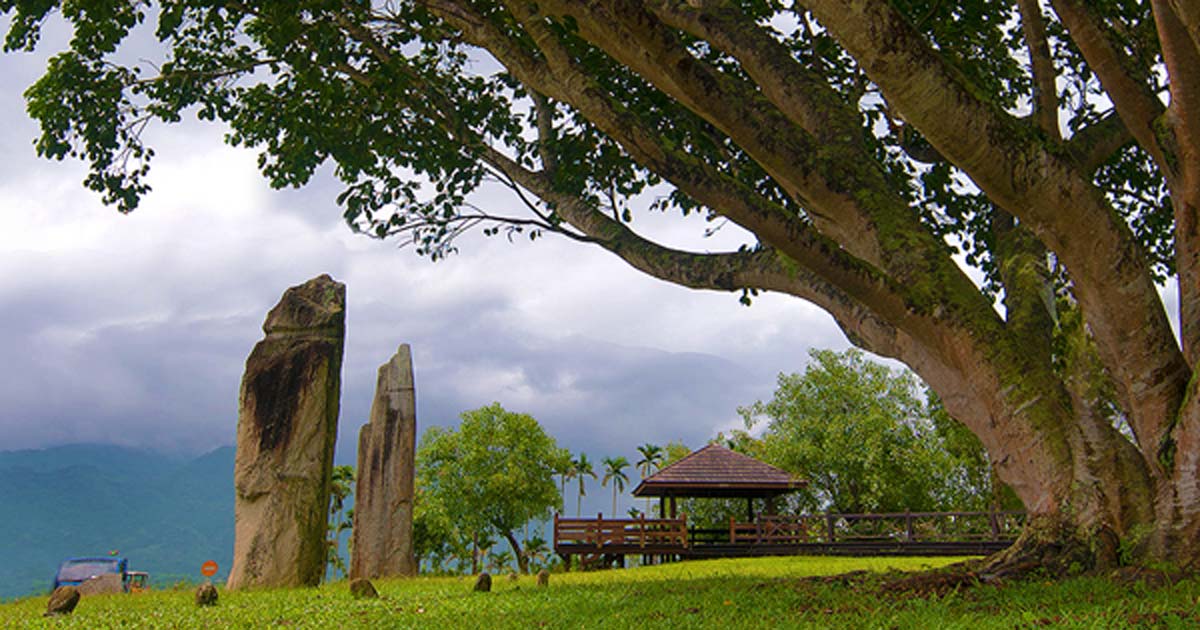The Saoba Stone Pillars of Taiwan Present A Peinan Culture Conundrum
Taiwan is a modern and dynamic country, but it also has a rich culture and history, which is often forgotten by the wider world. The island has been home to a variety of communities and cultures since the Neolithic age. One of the most remarkable archaeological sites in Taiwan are the Saoba stone pillars in the Satokoay Historical Site which is a third-grade national historic monument and one of Taiwan’s most popular tourist attractions.
The Enigmatic Saoba Stone Pillars
The stone pillars are two large, badly-weathered standing stones that may have once had carvings on them. The pillars are of different heights - one is 18 feet (6 meters) and the other is 12 feet (4 meters) high. They are situated on a slope north of the Wuhe terrace and face a deep river valley. The Satokay Historical Site is located in an area of outstanding natural beauty and the pillars can be seen from a distance.
Circles of small rocks surround both pillars, and how the two large stones were transported and erected at this site is a mystery, but given their remarkable location, Saoba stone pillars may have been used for ceremonial or religious purposes.
The Peinan Culture
The stones are believed to be part of the ancient Peinan Culture, also known as the Beinan Culture. There has been an excavation of the Saoba site, but it yielded little of historical value. And at another Peinan site, similar stone pillars were found which has led many experts to accept that the stones are important relics of Peinan culture.

Jade earing found at a Peinan Cultural site (Beinan Site Academic)
A similar standing stone to the one at Saoba can also be seen at National Museum of Prehistory and Peinan Culture Park. This Neolithic culture flourished in Taiwan about 2,000 to 3,000 years ago. It was fairly advanced when compared to previous societies on the island. It is noted for its distinctive stone coffins that have been found all over the Pacific and South-East Asia, convincing many that Taiwan was the birthplace of some of the Asian-Pacific cultures and civilizations. There is evidence that migration from Taiwan was very important in the spread of civilization in the region. While experts generally accept the stone pillars are from the Peinan culture, their role and purpose are not known.
Legends Associated With Saoba Stone Pillars
The Wuhe Terrace is the traditional home of the Ami people, an aboriginal group in Taiwan. While the majority of Taiwanese are of Han Chinese extraction there is a large community of aboriginal residents on the island. The Ami revere the Wuhu terrace and believe that the stones are very important in their history and culture. As a result, there are many stories about the stones in Ami lore.
- Niumatou Site: An Archaeological Preservation of Taiwan’s Lost Aborigine
- Taiwan Jaw Bone Connected to the Origins of Humanity, May Reveal Entirely New Prehistoric Species
- New study suggests that the Philippines is the ancestral homeland of Polynesians

Ami harvest dance (CC BY 3.0)
According to one story, a group of Ami came to Wuhi terrace several centuries ago. A storm blew up quite suddenly and they picked up some wooden planks for shelter and this saved their lives. In the Ami language, Saboa means plank, and the stones commemorate the time when men used wooden planks.
In another story, the pillars are a result of a ritual that was not performed correctly. When the Ami had built a house, the new owners had to circle the new construction while singing. This song had to be performed correctly or the spirits would be offended. Two people performed the song around their house, but it was not correct. The house was blown away by a wind and turned to a stone where it landed. The stone pillars, therefore, are the result of a song that was not sung in the right way.

The beautiful Hualien Landscape (Cho, W /CC BY-SA 2.0)
A third legend holds that a chief’s wife gave birth to twins which was seen as an evil portent. The tribal elders decided that the twins had to be tied to the gates of the village and the inhabitants of the village left and built a new settlement a few miles away. The twins that were tied to the post were turned to the stone pillars that now stand in Satokoay Historical Site.
The Saboa Stone pillars are located in Hualien, a mountainous area in the east of the island. There are many things to do in Hualien such as visiting its nature parks, many shrines and temples. There is public transport to the Satokoay Historical Site and admission is free. Accommodation in Hualien is plentiful and tourists are welcomed in Hualien.
Top image: Soaba Stone pillars Source: Photos by Satokoay Historical Site
By Ed Whelan
References
Bellwood, P. 1991. The Austronesian dispersal and the origin of languages. Scientific American, 265(1), 88-93
Available at: https://www.nature.com/scientificamerican/journal/v265/n1/full/scientificamerican0791-88.html
Blundell, D. 1997. Archaeology, cultural resource management and the Pacific: a look at the east coast of Taiwan. Bulletin of the Indo-Pacific Prehistory Association, 16, 233-241
Available at: http://journals.lib.washington.edu/index.php/BIPPA/article/viewFile/11665/10295
Stainton, M. 1999. The politics of Taiwan aboriginal origins. Taiwan: A new history, 27-44



















